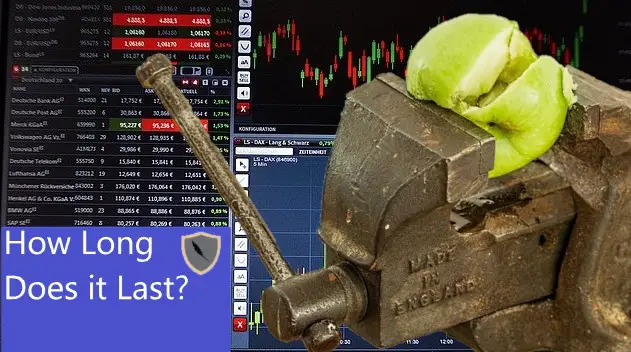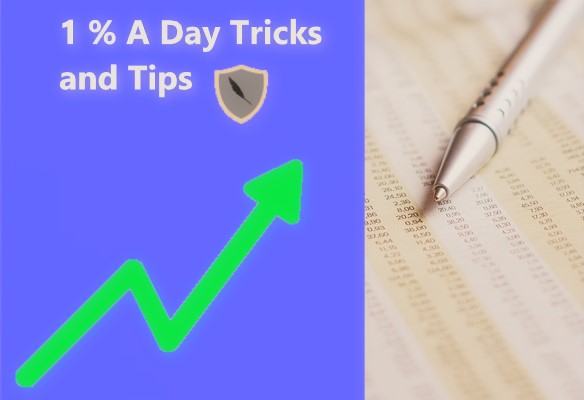I am sure you have heard the saying “Time in the market beats timing the market.” Well, for passive investors that simply invest, wait, and liquidate(sell) that is true. However, investing like that is going to get you nowhere fast. What if I told you that there is actually a way to actually time the stock market correctly to maximize returns.
In order to time the stock market correctly you need to understand the theory behind the markets, how average retail investors interact with the market, and how to profit from their increasing presence. By understanding this you can time your entrance and exits in investing and maximize your returns. It’s not an easy skill to learn, fortunately however I am here to show you how to time the stock market correctly.
This article goes into depth on the theory, methodology, and the risk in attempting to correctly time the market. By the end of this article you will be well on your way to being the 1% of retail investors who can routinely do this year over year to get upwards of an extra 10% on their portfolio.
Here at Chronohistoria I teach people to return well above average stock market returns (Alpha) within their portfolios. Feel free to sign up to the free newsletter to remain up to date on stock research and the tips/tricks of the trade.
Let’s jump right into how to actually time the stock market correctly.
Theory Behind Timing the Stock Market
The theory behind how you can time the market is two parts. First, there is an increase in total retail investors trading in the market. Second, These retail investors follow similar trends such as pulling money out around the winter months.
But understanding how the theory behind timing the stock market works we can then form an investment methodology so that you can always come out on top.
Part 1: Increasing Retail Investors
Stock markets on a large scale are simply just a way for the average retail investor to buy a representative portion of a company. Over the past 30 years the world has become more and more globalized, nowadays if someone in Cambodia sneezes then a stock broker in New York buys tissue stocks.
These global markets have been increasing over time. As more and more retail investors enter into the stock market volatility begins to increase. The investment methodologies that existed in the 1980’s no longer work. This is because in the 1990’s online investing started to take shape. (Source for increasing market power)
The average retail trader is driven by a demand to increase their total yearly return, well above the normal market average 0f 9.25%. Because of this we can start to see a cycle emerge within the stock market where these thrill seeking retail investors start to drastically increase volatility surrounding certain times in the year. (Source on increasing retail trader volatility)
An example of overall market implied volatility driven by retail traders was seen in 2020. With the aid of the U.S stimulus check, the average U.S consumer making $35,000-$75,000 increased their trading activity by nearly 90%. (Source for CNBC article)
Part 2: Retail Investors Follow Similar Trends
I’m not talking about meme stocks or other highly volatile assets. Here we are going to be looking at how over the past 5 years retail investors have started forming a repeatable yearly trend.
In the months of September/October the markets begin to see a pullback in the range of 2-5%. This yearly retracing of large indexes worldwide has just started to be studied in depth. It would appear that as more and more retail traders begin to invest in the stock market, the “October effect” becomes a self fulfilling prophecy. (Good article on the “October effect” and how it impacts global markets)
For example, here is an image demonstrating the “October Effect” over the past 4 years on the SPY.
The SPY follows the top 500 companies in the United States by market cap. Investing in the SPY is akin to investing in Google, Apple, Microsoft, and Amazon. The SPY right now is the best indication of the U.S economy.
Notice how over time the “October effect” has started to gain in prominence. This means that more and more retail investors are starting to get into the stock market. This is a good sign for us as we can start to make money from the effects they have upon the markets.
Building an Investment Methodology to Time the Stock Market Correctly
A stock investment methodology is simply just a formatted approach to investing in the stock market. After you develop a theory behind potential profits in the stock market, your next logical step is to figure out how to correctly position an investment to grow.
From the theory section of this article we know the following.
- Retail investor presence in the stock market is rising.
- Retail investors increase volatility
- The “October effect” causes retail investors to liquidate their positions. Driving the total market down.
So how do we profit from these trends? The answer is to buy large Index ETFs such as the SPY in October when they are at their lowest and wait for them to rebound.
If you successfully do this you can gain an extra 4-5% just off buying at the right time, or timing the market properly.
However I know you want to get higher returns than that. That’s the whole point of this site. Another easy way to ‘double dip’ on pullbacks on large index ETFs such as the SPY is to collect option premiums from them.
The “Double Dipping Strategy”
If you are happy with the extra 4-5% gain you got by timing the market properly then you can stop reading. The “Double Dipping Strategy” will boost that number up to around 8-10% on extra returns but comes at an increased risk.
However, since we are engaging in this strategy during the “October effect” then your total risk on the position is relatively low.
To “Double Dip” you need to buy an Index ETF that tracks the total stock market in October, when its at its lowest point. Then you immediately turn around and sell vertical option puts on the same index ETF. When done properly you will not only gain a return by the index ETF growing in value but also your option position will increase in value as well.
If you execute this strategy correctly you will notice that you will gain close to about 8-10% on top of the ETF position. This means that your total return for the year on that ETF position is between 15-22%. (Assuming you get 9.25% from the average total yearly return).
If you want to know more about the “Double Dipping” strategy check out this article I wrote that goes into great depth on everything. (Click here for article)
Timing The Market Correctly And The Risk
This type of investment strategy comes with risk. There is the chance that the “October effect” turns into an October crash. However that has not happened in recent memory and logic would dictate that you would notice something drastically wrong within the markets before the crash.
Further, by strategically selling option vertical puts on the index funds you are opening yourself up to losses in case the market tanks. When I execute this strategy I sell fart OTM vertical puts on the position around -40% from current asset value.
If the SPY were to lose 40% of its value and my OTM contracts became ITM then we all have larger problems then our stock portfolios.
To remove a portion of this risk I always recommend you hedge your portfolio. One of the best ways to do this on large Index ETF’s is by inversing the target markets currency. For the United States that would be buying gold since the U.S dollar is not based around the gold standard.
There are several other ways to hedge your portfolio against risk while also returning a higher profit. If you’re interested I wrote an all encompassing article on proper hedging techniques. (You can find it by clicking here)
Conclusion
There you have it, one of the easiest ways on how to actually time the stock market correctly. This is what professional investors do and now that you know one of their secrets you can do the same.
Correctly timing the stock market is going to take time and practice. It is a skill, and just like any other skill it will take time to learn it and practice it. One of the best things you can do is never stop learning about the markets and what drives them. Every day the market morphs from the previous, and if you’re fast enough you can catch this change and make some serious cash.
Here at Chronohistoria I teach people how to generate higher than normal market returns (Alpha) within their portfolio. If you’re down for it I have a free newsletter where I keep people up to date on the stock research and tips/tricks articles that I publish. Feel free to sign up to stay up to date.
Further, you can find some of the other articles below.
-
How Long Does a Short Squeeze Last? (3 Answers)

What is the time frame for you short squeeze? Well here is everything you will ever need to know to determine how long it will last.
-
Why You Still Own a Stock After It’s Delisted and How to Sell It

Do you still own a stock after its delisted? How do you sell it? Don’t worry the stock is still worth money and here is how to sell.
-
Can You Make 1% A Day in the Stock Market? (3 Steps)

Making 1% a day in the stock market is hard but defiantly doable. Here are 3 simple steps to helping you achieve this return.
Until next time, I wish you the best of luck in your investing journey.
Sincerely,



